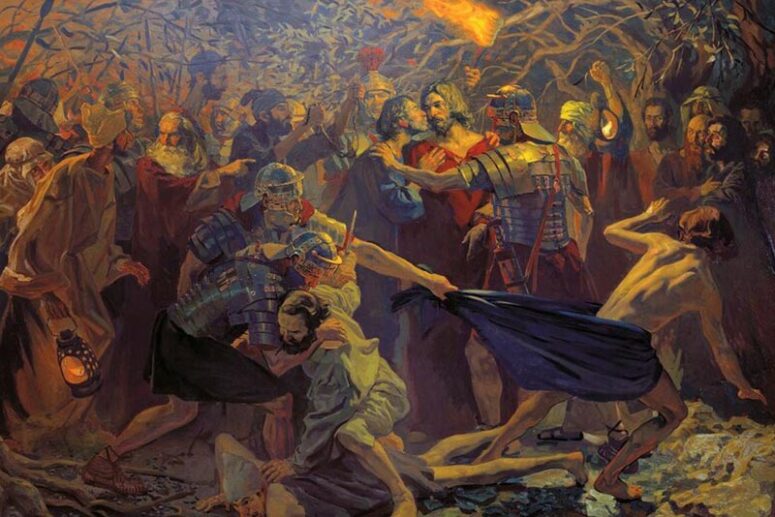
Is everything in the Gospel account of Holy Week, from Christ’s crucifixion to His resurrection, perfectly clear? Many have questions and uncertainties about these pivotal events. We’ve gathered some common queries and sought answers from Archpriest Dimitri Yurevich, head of the Department of Biblical Studies at St. Petersburg Theological Academy.
Who exactly arrested Christ?
The arrest of Christ involved two groups: the temple guards sent by the high priest Caiaphas, and a detachment of Roman soldiers. The exact role and status of these Roman soldiers remain a topic of historical debate. It’s unclear whether they were performing their official duties or had been hired by the Jewish high priests.
At the time, Judea was under Roman occupation, complete with a stationed garrison. St. John Chrysostom suggests that these soldiers were sometimes allowed to undertake private jobs for extra money, with their superiors turning a blind eye. This view is supported in his “Homilies on the Gospel According to John,” where he notes that these soldiers were often willing to do anything for additional pay.
Alternatively, it’s possible that the chief priests formally requested assistance from the Roman garrison to apprehend a potential rebel from Galilee. This theory could merge with the first: the soldiers might have been following orders from their commanders while also being compensated by the Jewish leaders.
The involvement of Roman soldiers was likely a strategic decision by the chief priests. They might have wanted a backup in case Jesus had armed protectors or if the temple guards, potentially harboring secret followers of Christ, proved unreliable.
What was Judas’ role in the arrest of Jesus? Could it have been done without him?
Judas played a critical role in the arrest of Jesus, which went beyond merely betraying Him for thirty pieces of silver. His involvement was multifaceted: firstly, he was responsible for leading the temple guard and Roman soldiers to the precise location at the correct time. Secondly, he had to clearly identify Jesus among those gathered on the Mount of Olives. To the Roman soldiers, distinguishing Jesus from His disciples was challenging as they were not familiar with the individuals involved.
Moreover, Judas had to manage any arising issues during the arrest. An intriguing incident is recorded in the Gospel of John, which other evangelists do not mention. As the armed group approached Jesus, He asked them, “Whom are you seeking?” They responded, “Jesus of Nazareth.” When Jesus declared, “I am He,” everyone, including the Roman soldiers, fell to the ground.
This reaction raises questions: Why did everyone fall? It’s theorized that when Jesus said “I am,” it echoed the sacred name “Yahweh” in Hebrew, a name traditionally not spoken aloud. The profound impact of hearing this might have caused the Jews present to fall down in awe or fear. But why would the Roman soldiers react similarly, given that the sacred implications of the name would be meaningless to them? St. John Chrysostom suggests that something about the way Jesus presented Himself in that moment revealed a divine authority that even the Roman soldiers could sense, causing confusion and disarray.
At this critical juncture, Judas intervened decisively to quell any potential panic. He stepped forward and greeted Jesus, both signaling to the soldiers whom to arrest and reassuring them by his familiar manner: “Everything is under control; this is just an ordinary man.” This act of greeting was crucial in marking Jesus for arrest and maintaining order among the troops. Thus, Judas’ involvement was essential, not just for identifying Jesus but also for managing the situation, ensuring the arrest proceeded as planned.
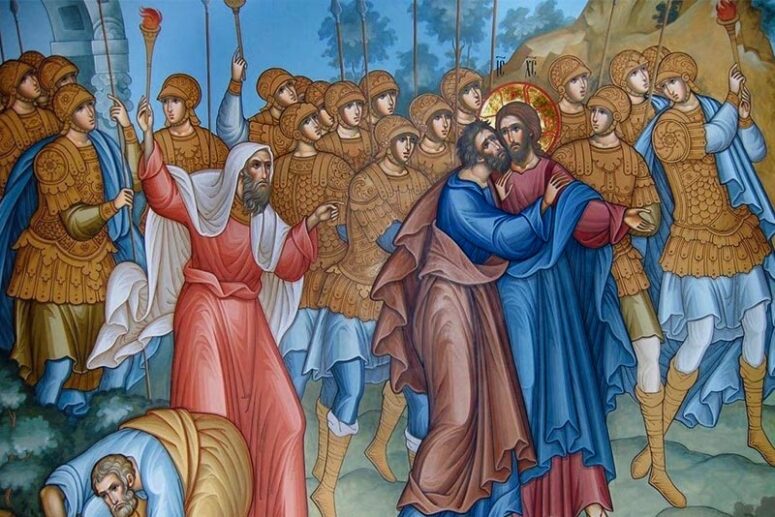
What was the significance of Judas’ kiss during the arrest of Jesus?
The kiss that Judas gave Jesus was not merely a signal to the soldiers; it was laden with deeper symbolic and cultural meanings. In Judea at the time, a kiss was a common greeting among friends, signifying respect and affection. By choosing this particular gesture, Judas not only identified Jesus to the soldiers but also underscored his close relationship with Him. This act could have been a way for Judas to overcome any personal hesitation or to assert his familiarity with Jesus, which in turn would demonstrate to the arresting party that Jesus was merely a man, not a divine entity.
This gesture of betrayal was profoundly cynical, something that did not escape Jesus’ notice. His response to Judas, “Are you betraying the Son of Man with a kiss?” as recorded in Luke 22:48, highlights the stark contrast between the intimate form of the greeting and the treachery it concealed. Thus, the kiss was not just a practical tool for identification—it was a complex act of betrayal that carried significant emotional and symbolic weight, deeply intertwining closeness and betrayal.
Why was Jesus arrested on the night between Thursday and Friday, and not at another time?
The timing of Jesus’ arrest was influenced by both divine intention and practical considerations. Theologically, His arrest and subsequent crucifixion were divinely timed to coincide with the Jewish Passover. This was not coincidental; it held deep symbolic significance. As Apostle Paul notes in his first letter to the Corinthians, Christ is likened to the Passover lamb, sacrificed to deliver not just the Jews but all humanity from the bondage of sin and death (1 Corinthians 5:7). In this way, Jesus’ death during Passover underscored His role as a sacrificial lamb for mankind’s salvation.
Practically, the night between Thursday and Friday presented an opportune moment for Judas to enact his betrayal. Knowing Jesus’ routine to visit the Garden of Gethsemane after the Last Supper, Judas found this secluded spot ideal for carrying out the arrest away from the public eye, thus avoiding any potential disturbance from Jesus’ followers. This convergence of divine symbolism and logistical timing underscores both the spiritual and earthly dimensions of the events leading up to the crucifixion.
Why did Pilate insist on the inscription “King of the Jews” on Jesus’ cross?
The reason Pilate ordered the inscription “King of the Jews” to be placed on Jesus’ cross in Hebrew, Latin, and Greek involves both a political maneuver and a practical declaration. Firstly, it was a form of sarcasm aimed at the Jewish leadership. Despite their insistence that the inscription should read, “He said, ‘I am King of the Jews’,” Pilate’s refusal to alter the wording served as a taunt, effectively stating, “You present Him as a king; therefore, He shall be labeled as such.” This was Pilate’s way of mocking their accusations and their desire for Jesus’ condemnation under the guise of His royal claims, highlighting their lack of genuine sovereignty under Roman rule.
Secondly, the inscription served a legal purpose by clearly stating the grounds for Jesus’ execution to all who observed, including the diverse populace gathered in Jerusalem for Passover. It communicated that Jesus’ crucifixion was due to His alleged aspirations to kingship, a politically motivated charge rather than a condemnation for His teachings or supposed miracles. This was crucial in a city swelling with Jews and others familiar with Jesus’ reputation, as it underscored the Roman perspective of maintaining order and quelling any potential uprisings by clarifying that the crucifixion was a matter of state security, not religious dispute.

Could Pilate have acquitted Jesus, and what alternatives did he have?
Pilate certainly possessed the autonomy to acquit Jesus, exercising the free will inherent to all individuals rather than acting as a predetermined agent. He faced a real decision: to risk the ire of the Jewish leaders by releasing Jesus or to succumb to their pressures. Indeed, acquitting Jesus could have jeopardized his own position and safety. Given that Pilate’s primary role was to uphold Roman authority and suppress any signs of insurrection, releasing someone accused of claiming kingship could have been seen as a failure to maintain control, potentially inviting rebellion in a region already simmering with discontent due to movements like the Zealots.
The Jewish leaders were adept at manipulating this dynamic, threatening to report Pilate for any perceived leniency towards a potential insurgent, which could undermine Roman rule and jeopardize their own position. Such an action would have positioned Pilate as complicit in weakening Roman authority, a serious accusation that could end his career and result in severe punishment, though not necessarily execution.
Thus, Pilate faced a stark choice between justice and personal and professional security. Ultimately, he opted for the latter, prioritizing his career over the righteous decision, showcasing the tragic reality of political expediency over moral rectitude.
Understanding Christ’s Cry on the Cross: “God, why have You forsaken Me?”
When Jesus cried out, “God, why have You forsaken Me?” from the cross, He was expressing a profound aspect of His humanity. This cry is not just a simple question but a deep expression of human suffering and isolation. This moment highlights the extreme degree of suffering that a person can feel when they sense that God has abandoned them.
Christ, fully divine yet fully human, chose to experience the full scope of human pain without any alleviation, including the profound spiritual suffering of feeling abandoned by God. He could have lessened His suffering but chose to endure it fully to align His human will with the divine will, rejecting any form of relief.
This aspect of His Passion is crucial for believers to understand because it emphasizes that Christ underwent the greatest sufferings imaginable, surpassing the hardships that any human could endure. His experience includes every facet of human agony, up to and including the sensation of being forsaken by God, which is perhaps the most intense suffering a human being can endure.
The significance of this cry is also to reassure us that there is no human experience of pain, abandonment, or despair that Christ has not Himself experienced. Unlike us, who suffer due to our own sins or the sins of the world, Christ’s suffering was wholly undeserved and was borne out of His immense love for humanity. Thus, no one can rightfully claim that Christ does not understand their suffering or that He has not experienced their pain. His cry from the cross is a powerful assurance that He truly empathizes with the human condition.
Exploring the Divine Mystery: God’s Presence in Christ’s Suffering on the Cross
The question, “How could God have forsaken Him if He is God Himself?” probes deep into the mystery of the Incarnation and the nature of Christ’s suffering on the cross. This issue is pivotal in Christian theology and has historically been a focal point for significant doctrinal disputes.
The core of the dilemma lies in understanding the dual nature of Christ. Christ is both fully God and fully human—a fundamental truth affirmed by Christian doctrine. This dual nature is not a blending where attributes become diluted or merged into something lesser; each nature remains distinct and fully intact within the one Person of Jesus Christ.
In addressing who suffered on the cross, we confront two historical heresies: Nestorianism and Monophysitism. Nestorianism asserts that Christ’s divine and human natures are so distinct that only His human side suffered, implying He was more of a divinely favored man than truly divine. Monophysitism suggests the opposite, claiming Christ’s divine nature absorbed His human nature, thus denying that His suffering was genuine and undermining the reality of His humanity.
The Church, at the Fourth Ecumenical Council in 451, navigated between these extremes by articulating the doctrine of the hypostatic union: in Christ, the divine and human natures are united without confusion, change, division, or separation. This means that while the human nature experienced the physical and emotional agonies of crucifixion, these sufferings belonged to the whole Person of Christ, who is both God and man.
Thus, when Christ expressed the feeling of abandonment—“God, why have You forsaken Me?”—He did so in His human capacity, illustrating the depth of His suffering and the completeness of His empathy for human despair. Simultaneously, His divine nature was fully present, sharing in the suffering yet overcoming death, not aloof from human pain.
This profound mystery underscores that it is not merely man who suffered, nor was it a being who was only superficially human. Instead, it was God in human flesh, fully participating in human suffering, thus bridging the infinite gap between the Divine and fallen humanity through His atoning sacrifice. This theological insight ensures that Christ’s suffering was both genuinely human and suffused with divine purpose, making salvation accessible to all.
Understanding the Subtle Signs of Christ’s Resurrection Compared to His Crucifixion
The dramatic signs accompanying Christ’s crucifixion—three hours of darkness, an earthquake, the temple veil tearing, and the resurrection of some dead saints—underscore the profound cosmic and theological significance of that moment. These events symbolize the old covenant’s culmination and the ushering in of a new era through Christ’s sacrifice, a transition from the Old Testament practices to the new salvation offered in Jesus.
The darkness, unexplainable by natural phenomena such as a solar eclipse or weather conditions, underscores the world’s spiritual darkness at the moment of its Savior’s death. This darkness lasted three hours, far exceeding any natural eclipse, symbolizing the profound spiritual change occurring.
The earthquake and the tearing of the temple’s veil physically represented the shattering of the old religious order. The temple veil, separating the holiest part of the temple from the rest, symbolized the barrier between God and man that Christ’s death tore apart, granting believers direct access to God.
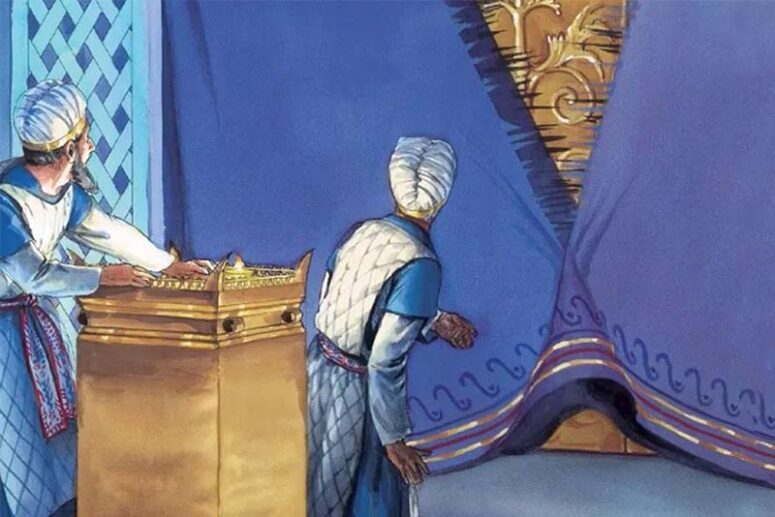
Moreover, the resurrection of the righteous before Christ’s resurrection prefigures the ultimate victory over death that Christ’s own resurrection would accomplish. These signs served to underscore the significance of Christ’s sacrifice to the contemporaries and were later interpreted by the apostles as they spread the Gospel, helping early Christians and subsequent generations understand the crucifixion’s profound implications.
In contrast, the Resurrection itself was a quieter event in terms of cosmic phenomena. Christ rose from the dead and appeared directly to His disciples rather than to a wide public audience. This approach was deliberate, serving a pedagogical purpose. The disciples, as witnesses of the Resurrection, were tasked with spreading the news of Christ’s victory over death. By appearing to them rather than performing a public spectacle, Christ ensured that the foundational Christian testimony was based on personal encounter and witness, not on spectacle.
This distinction highlights a shift in how divine intervention was manifested: the crucifixion signs were to affirm the New Covenant’s establishment to all, while the Resurrection’s relatively private revelation was to equip the apostles for their mission to testify about Christ’s victory, emphasizing faith based on witness and proclamation rather than public signs.
Thus, the different nature of the signs accompanying Christ’s death and Resurrection reflects the different purposes these events served in the divine plan for humanity’s salvation.
The Paradox of Belief: Why Jesus Only Appeared to the Disciples After His Resurrection
Understanding why Jesus chose to appear only to His disciples rather than to the general populace after His resurrection is crucial for grasping the nature of faith and belief. The answer ties into the essential characteristics of true faith, which involves freedom—the freedom to believe or reject.
When considering the impact of Jesus’ miracles during His life, such as the raising of Lazarus, we observe that not everyone who witnessed or heard about these miracles believed in Him. In fact, some of the most astounding miracles precipitated greater opposition and hostility, rather than faith. This pattern underscores a profound biblical truth illustrated in the parable of the rich man and Lazarus, where Abraham tells the rich man that those who do not listen to Moses and the prophets will not be persuaded “even if someone rises from the dead” (Luke 16:31). This suggests that miraculous evidence is not always sufficient to engender true faith.
Additionally, when Jesus addressed Thomas after the resurrection, He highlighted, “Because you have seen Me, you have believed. Blessed are those who have not seen and yet have believed” (John 20:29). This statement points to the higher value placed on faith that does not rely on sight or empirical proof. True faith transcends visible proof and enters the realm of personal conviction and trust, which must be freely chosen.
Faith compelled by undeniable proof, such as a public resurrection spectacle, could lead to belief out of fear or compulsion rather than love and voluntary commitment. James’s epistle reflects this by comparing the belief of demons, who believe out of fear, not love or trust (James 2:19).
Had Jesus appeared to His skeptics and detractors after His resurrection, their belief might have been driven by fear or a desire to control or manipulate the newfound truth of His power, rather than a genuine conversion of heart. This would not result in the salvific faith that Christianity calls for, which is rooted in love and personal commitment.
Therefore, the limited appearances of the resurrected Jesus highlight the importance of faith that is freely chosen and transformative. This approach respects human freedom and the profound nature of faith as a personal journey toward truth, rather than a coerced acceptance of irrefutable evidence.
Translated by The Catalogue of Good Deeds
Source: https://foma.ru/tri-dnya-pered-pashoy.html


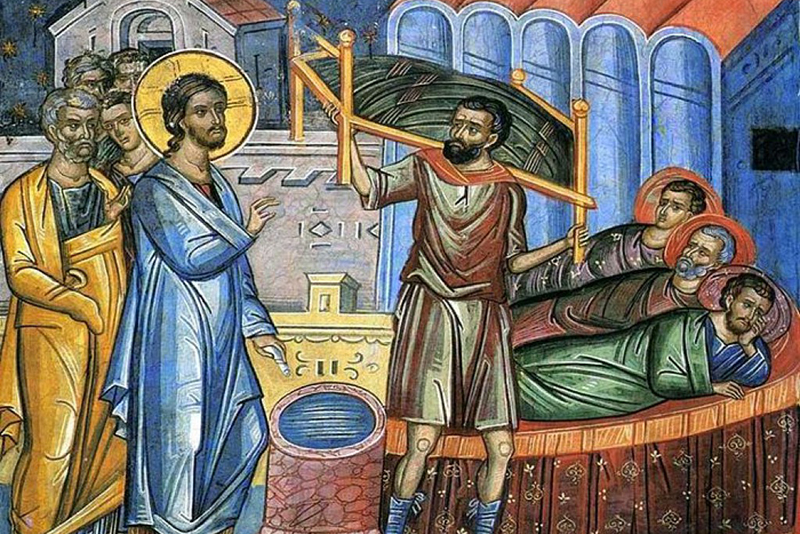
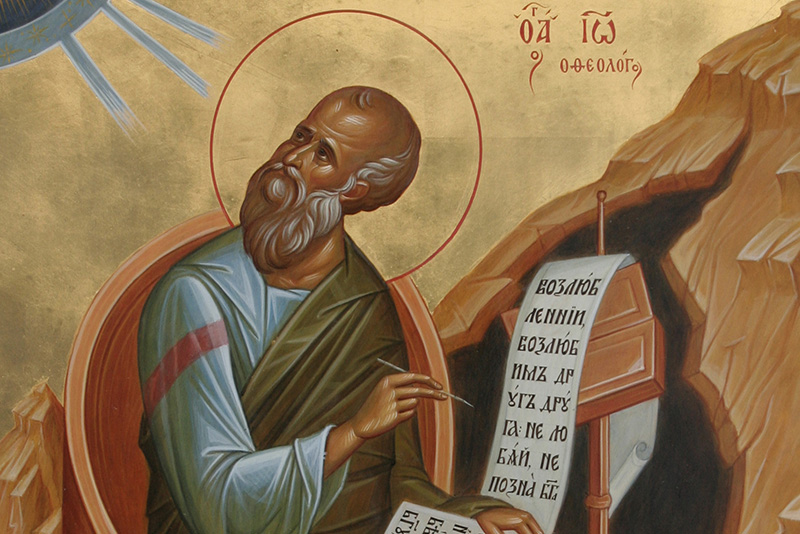

Splendid! This article could not have been written any better than that.